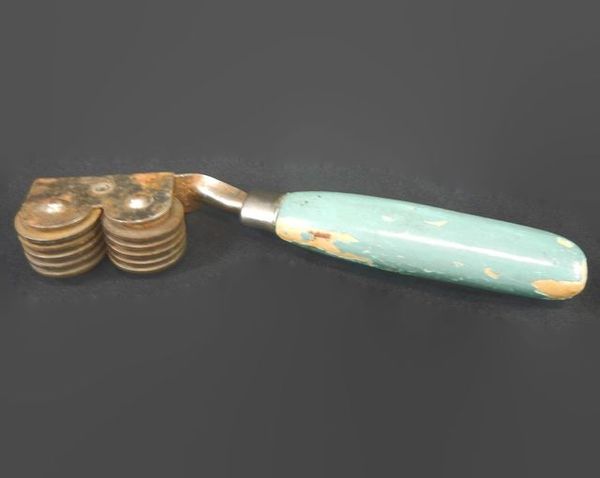Throughout history, the art of knife sharpening has been an essential skill, evolving alongside the development of blades. In ancient times, early humans relied on natural stones to keep their tools sharp. As civilizations progressed, so did the techniques for sharpening knives.

Ancient Egyptians, Greeks, and Romans crafted rudimentary sharpening devices using a combination of stone and metal. The medieval period brought forward more sophisticated tools, such as whetstones and honing rods made from harder materials like novaculite.
But it was during the industrial revolution that knife sharpener designs underwent a significant transformation. Mechanized sharpeners, powered by foot pedals or steam engines, introduced rotating wheels and grinding stones. This revolution made sharpening knives more efficient and accessible to many.
Notable brands like Carborundum and E.C. Simmons Keen Kutter became household names, producing sharpeners that were not only functional but also visually captivating. These vintage sharpeners often featured intricate designs and meticulous craftsmanship.
Different Types of Vintage Knife Sharpeners
Vintage knife sharpeners come in various forms, each designed for specific purposes and types of blades. Let’s explore some of the most common types:
Whetstones: These versatile stones, whether natural or synthetic, are used with water or oil to sharpen knives. They are known for producing finely honed edges.
Honing Rods: Made from steel or ceramic, honing rods are used to realign the blade’s edge, maintaining sharpness between more intensive sharpening sessions.
Grinding Wheels: Available in manual and motorized versions, grinding wheels employ abrasive surfaces to quickly restore a dull blade’s edge.
Handheld Sharpeners: Compact and user-friendly, handheld sharpeners often feature a V-shaped notch with embedded abrasive materials. They are ideal for quick touch-ups.
Using these vintage tools requires skill and an understanding of the blade’s geometry. It involves maintaining consistent angles and applying the right amount of pressure. Skilled users can achieve razor-sharp edges, enhancing the longevity and functionality of their knives.
The Legacy and Revival of Vintage Knife Sharpeners
The legacy of vintage knife sharpeners lies in their craftsmanship, durability, and their significance in everyday life. Many of these tools were built to last, becoming cherished heirlooms passed down through generations. Today, collectors and enthusiasts value vintage sharpeners for their historical importance and the insights they provide into past technologies and daily practices.
The resurgence of interest in traditional cooking and DIY skills has sparked a renewed appreciation for these vintage tools. Artisans and chefs recognize the superior quality of hand-sharpened blades, leading to a revival in the use of whetstones and other manual sharpeners. Contemporary manufacturers often draw inspiration from vintage designs, blending classic aesthetics with modern materials and engineering.
Moreover, vintage knife sharpeners are not only practical but also cherished as decorative items. Their intricate designs and the stories they carry make them appealing collectibles. Museums and private collections often showcase these tools, highlighting their evolution and the artistry involved in their creation.
Vintage knife sharpeners symbolize the perfect blend of functionality and craftsmanship. They remind us of a time when tools were made with care and precision, bridging the gap between the past and present culinary practices. The enduring legacy of vintage knife sharpeners continues to sharpen our appreciation for quality and tradition in the art of blade maintenance.





